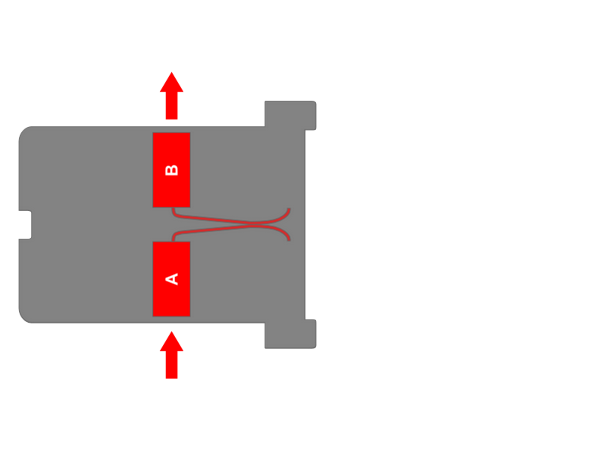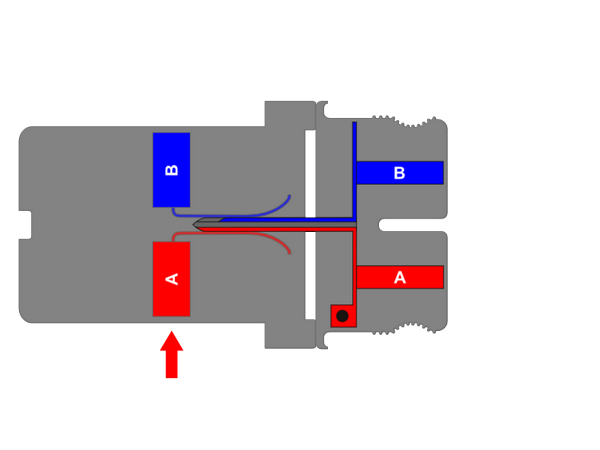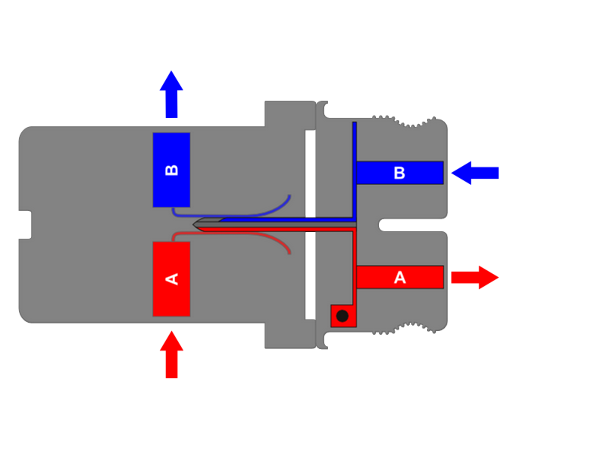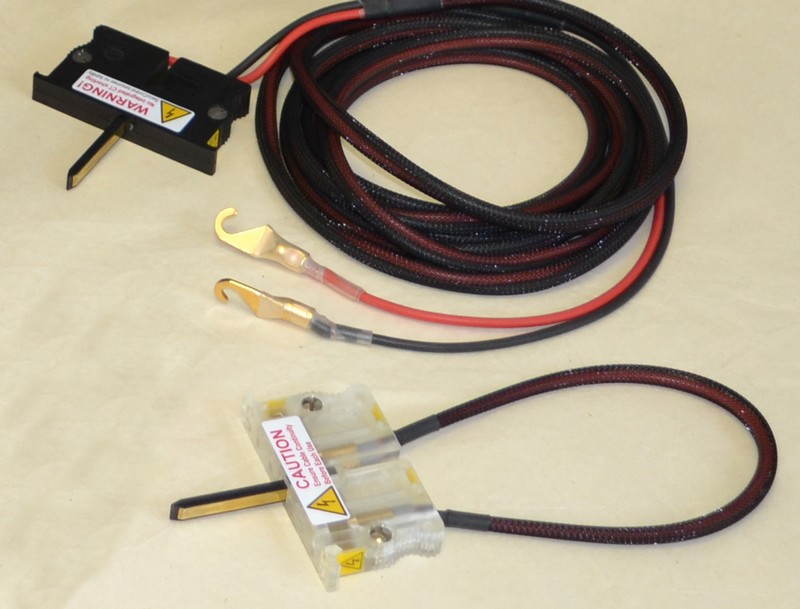 Closed circuit
Closed circuitA FTS test block contains 8, 10, 12, 14, 16, 18 or 20 modular units (or poles) each allocated to a current, voltage, signal or trip circuit. Each circuit is connected through the block via two silver-plated copper contacts, pressed securely together by two pressure springs to create a highly conductive electrical connection. In this situation, an electrical connection is established between the device side (B) and the system side (A).
 Open Circuit
Open CircuitWhen testing, the corresponding FTP test plug is inserted into the test block. In this position, the device and system sides of the test block are isolated from each other. The test plug includes internal shorting bridges for the current circuits. When the test plug is removed from the test block, the internal springs force the contacts back together, returning the circuits to its normally-closed position.
 Signal Injection
Signal InjectionBanana jacks in the test plug allow the connection of a test set to the device side of the test block and the associated signal injection. Access to the system side is also provided.
 ST Switch
ST Switch
 Drawout Case Test Plug
Drawout Case Test Plug
 FTL
FTL
 LTS
LTS
 ITS / STP
ITS / STP
 FTS / FTP
FTS / FTP
 LTB / LTP
LTB / LTP
 SAX / PAX
SAX / PAX














 Closed circuit
Closed circuit Open Circuit
Open Circuit Signal Injection
Signal Injection Cases for FTP Test Plugs
Cases for FTP Test Plugs Current Measurement Probe
Current Measurement Probe FTS 19´´ Rack Plates
FTS 19´´ Rack Plates

